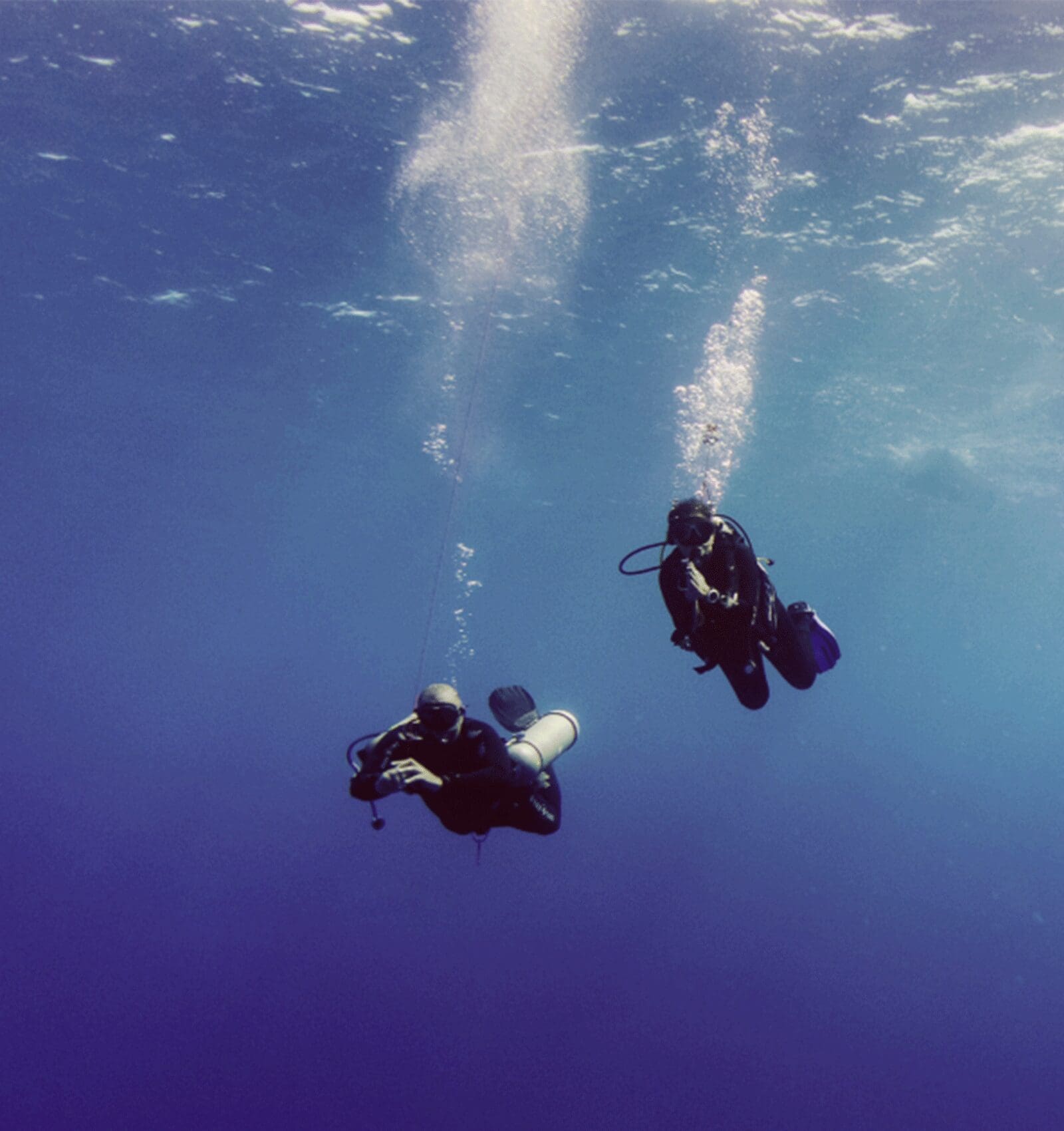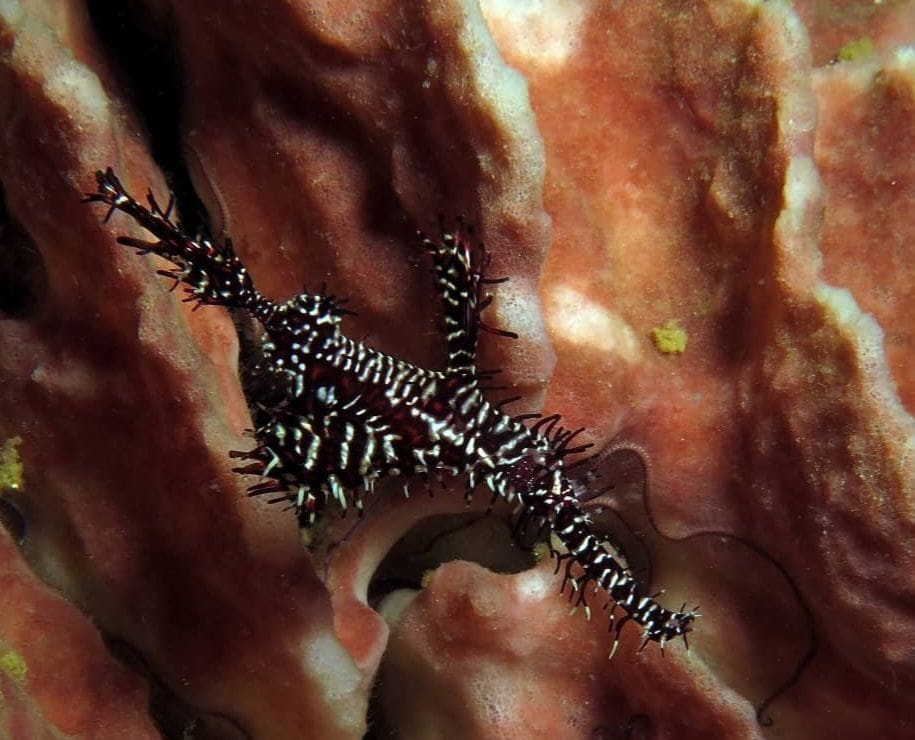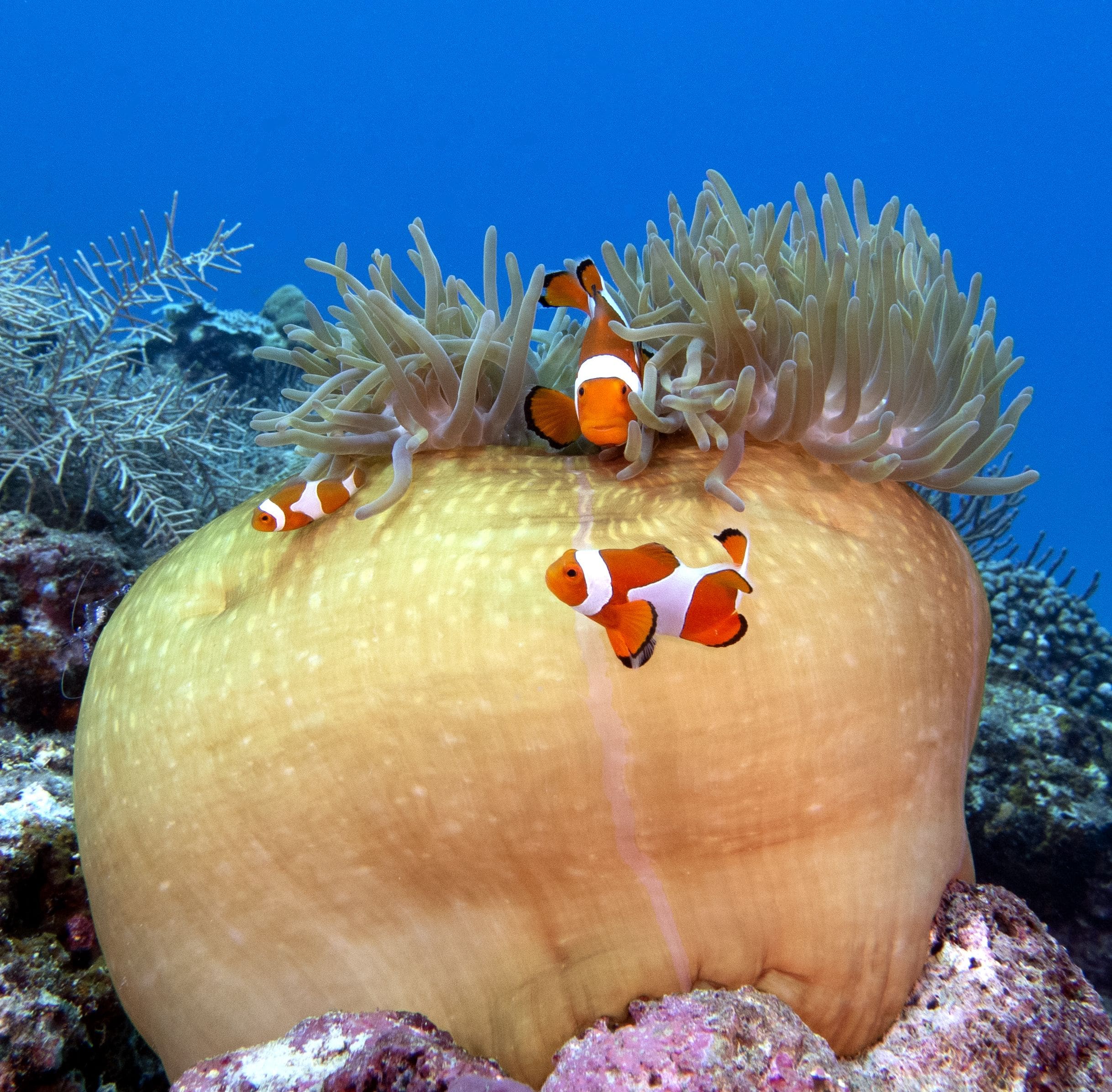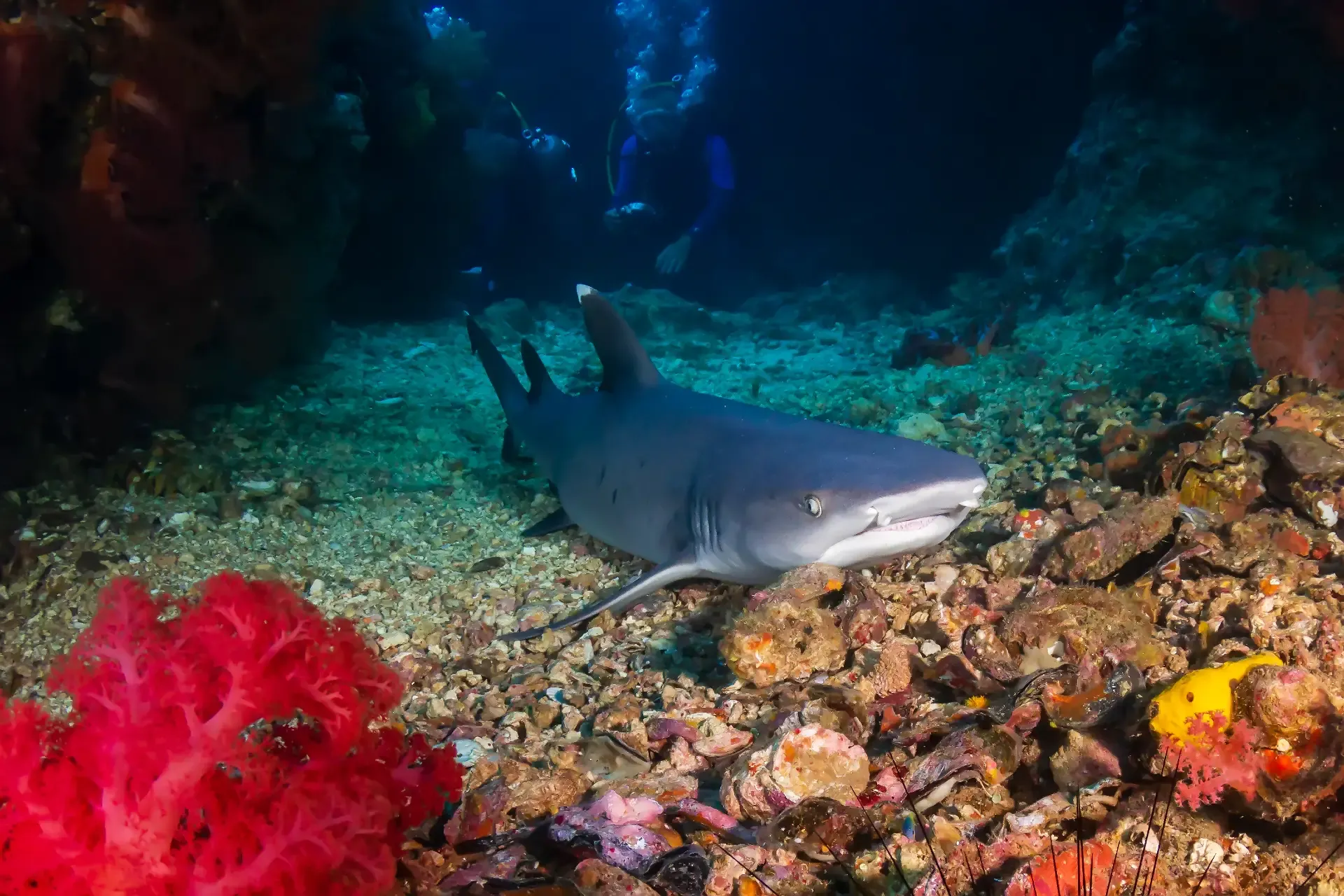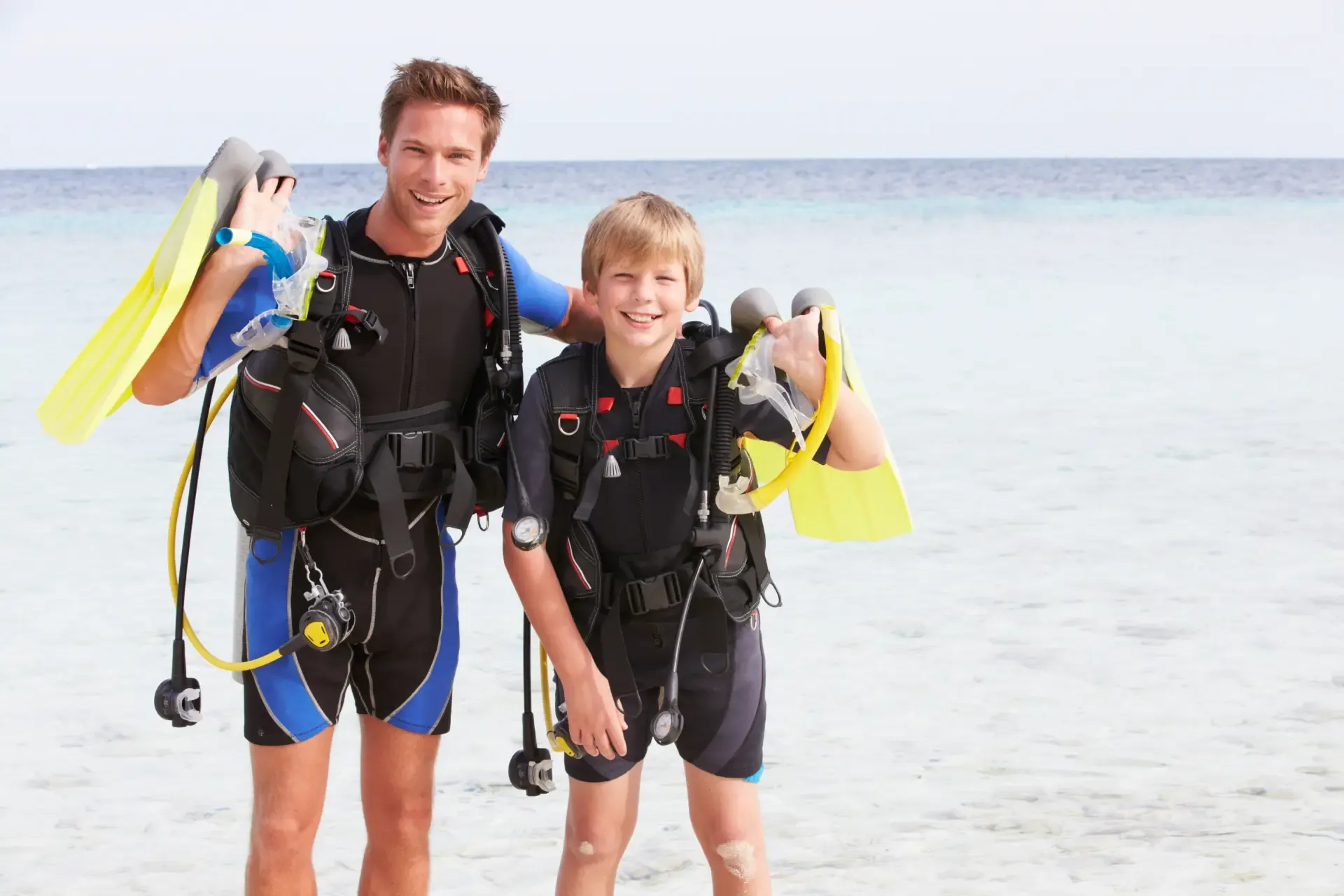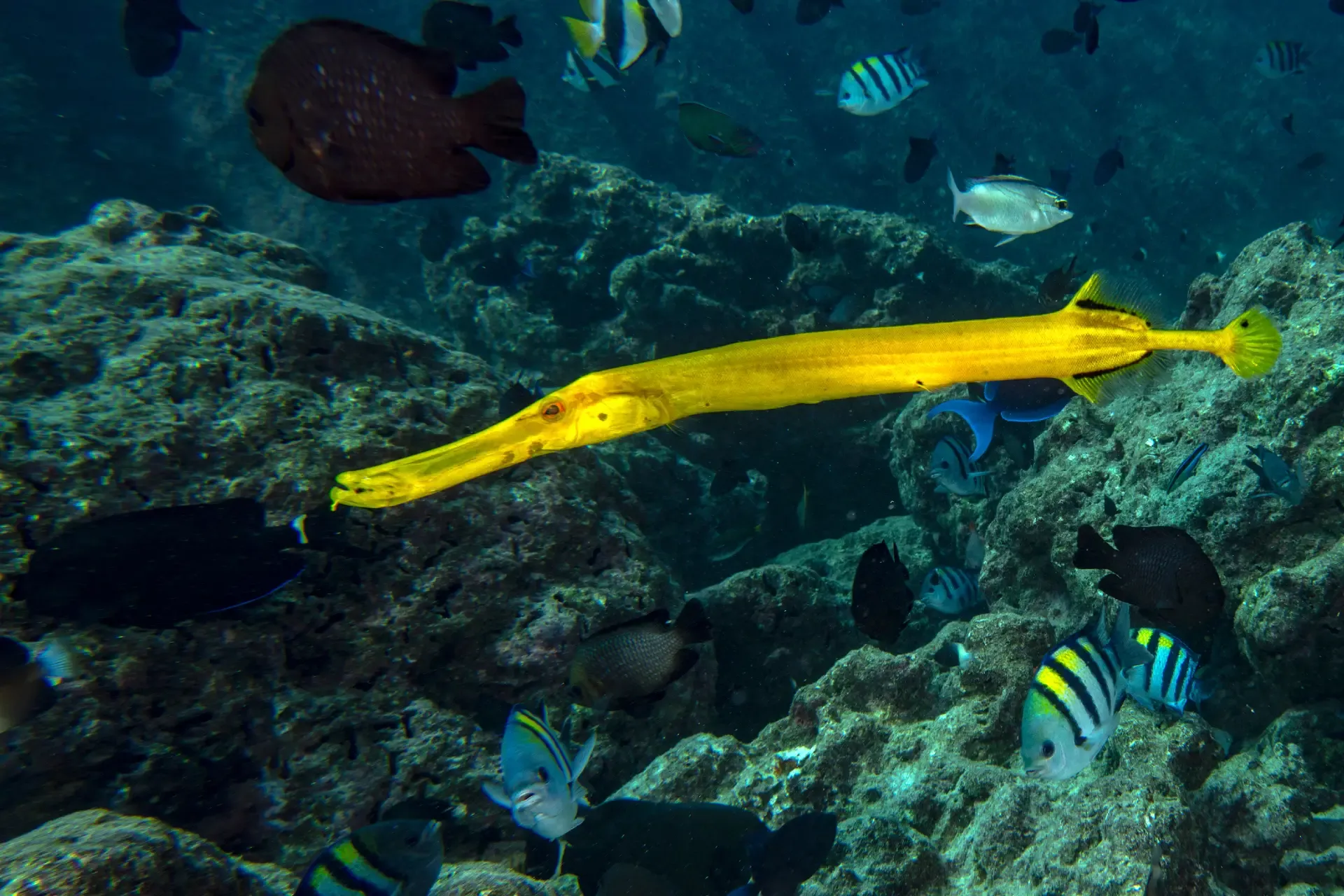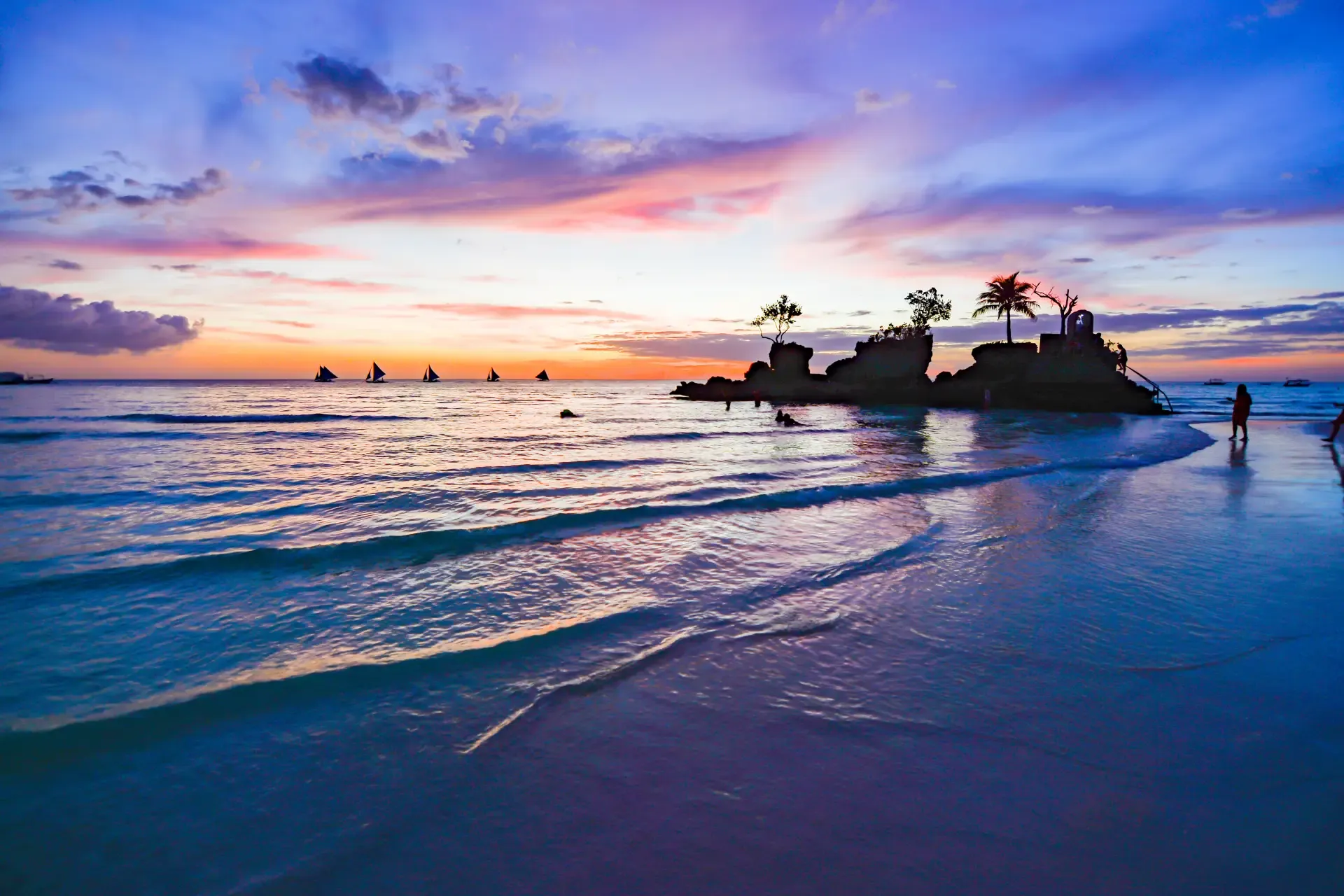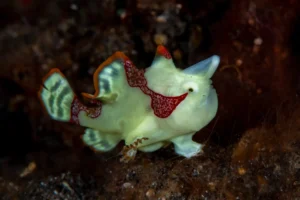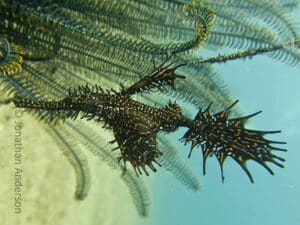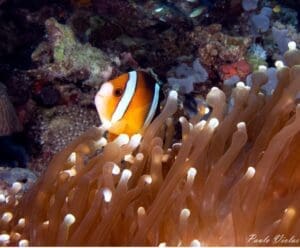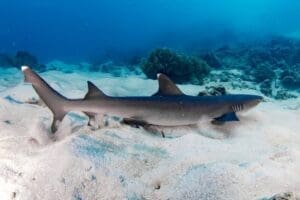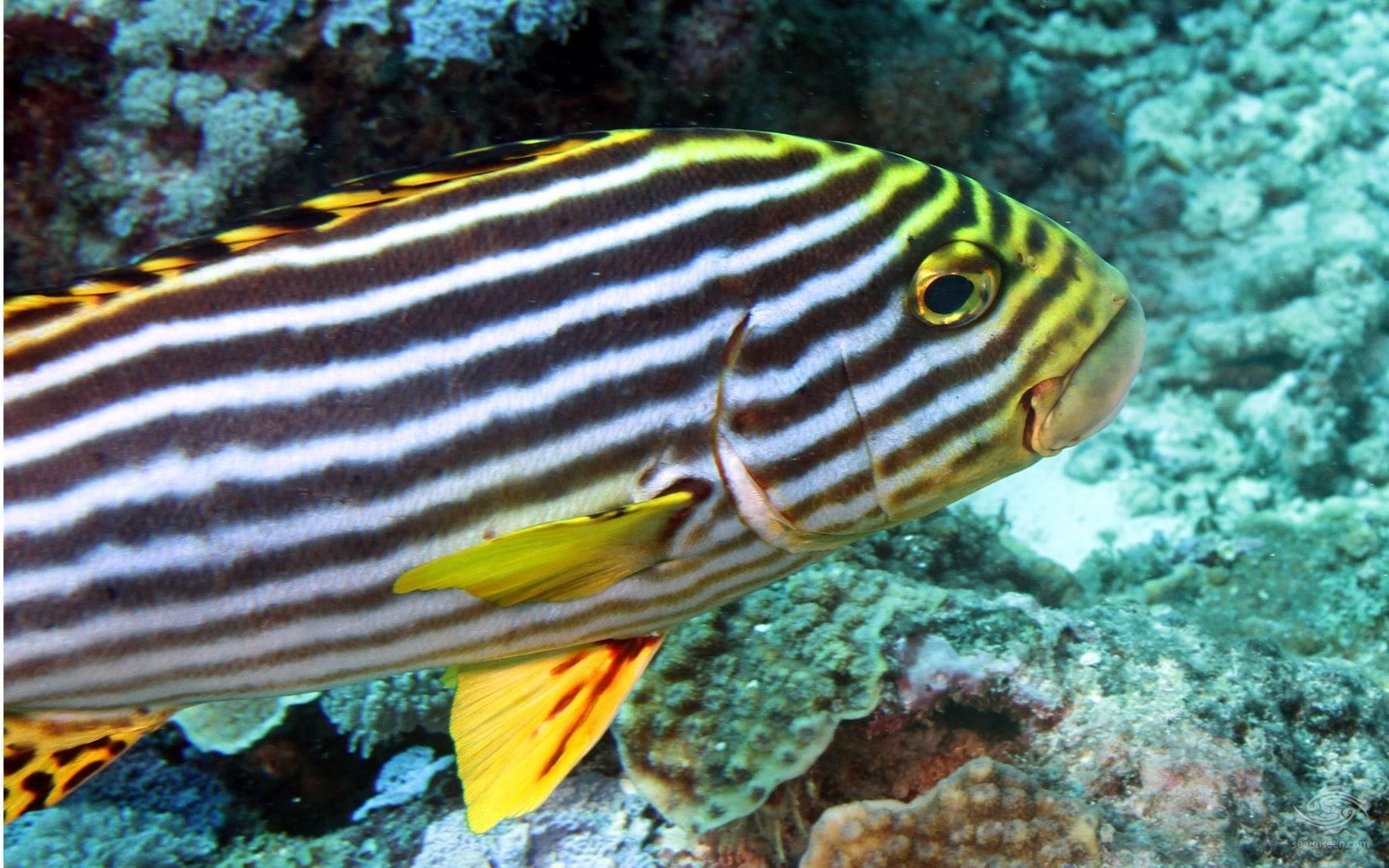Ghost Pipefish in Boracay
Ghost Pipefish in Boracay: Where to Find Them and Fun Facts You Should Know
Boracay is not just famous for its white sand beaches and crystal-clear waters — it’s also a diving paradise! As a diver’s haven, Boracay offers plenty of opportunities to encounter unique and rare marine species, including the elusive Ghost Pipefish. These fascinating creatures are a must-see for underwater enthusiasts, and as a leading scuba diving school in Boracay, we are excited to share all the details on where you can find them and what makes them so special.
🏝️ Where to Find Ghost Pipefish in Boracay: The Camia 2 Wreck
One of the best spots to see the Ghost Pipefish in Boracay is at the Camia 2 wreck, located at a depth of 24-27 meters. This wreck, intentionally sunk 20 years ago, has since become a thriving artificial reef that’s home to an abundance of marine life, including several Ghost Pipefish.
At the Camia 2 wreck, you’ll often spot 4 to 5 Ghost Pipefish in the area. These mysterious creatures tend to stick close to the soft coral growths around the wreck. The best part? They come in various colors — white, black, and green, each with their own unique beauty, making the sighting even more mesmerizing.
🌈 The Different Colors of Ghost Pipefish
Ghost Pipefish are known for their striking appearance and color variations. These little creatures typically come in shades of white, black, and green, adding an extra layer of excitement when diving. Their bodies resemble sticks or leaves, which helps them blend into their surroundings — making them incredibly difficult to spot unless you know exactly where to look.
Ghost Pipefish usually stay at a depth of 24 to 26 meters, but you might find them a bit deeper at 27 meters at Camia II. They enjoy hiding in the soft coral, which provides them with excellent camouflage.
🐟 Fun Facts About Ghost Pipefish
Ghost Pipefish belong to the same family as seahorses and pipefish, and they share several traits with these fascinating relatives. Here are some fun facts about Ghost Pipefish that make them so unique:
- Masters of Camouflage: Ghost Pipefish are known for their incredible ability to blend in with their environment. Their elongated, leaf-like bodies and fins allow them to hide in soft corals, sponges, and seagrass — making them a challenge to spot without a trained eye.
- Diet: Like their cousins, seahorses, Ghost Pipefish are carnivorous. They feed on small crustaceans, plankton, and larval fish, using their small, specialized mouths to suck in prey.
- Mating Rituals: Ghost Pipefish engage in fascinating courtship behaviors, similar to seahorses. The male carries the fertilized eggs in a specialized brood pouch, playing an important role in the reproduction process.
- Rare Sightings: Ghost Pipefish are elusive and not always easy to spot. However, when you know where to look — like around the Camia 2 wreck — spotting one is an unforgettable experience for divers.
🌊 How Ghost Pipefish Contribute to Boracay’s Diving Experience
Boracay’s underwater world is known for its rich biodiversity and beautiful dive sites. The Camia 2 wreck is one of the top sites for macro diving, attracting divers from around the world. It’s not just a great location for encountering Ghost Pipefish, but also for spotting other unique marine creatures, including vibrant corals, rare critters, and colorful fish species.
The soft coral-covered wrecks of Boracay, such as Camia 2, are not only visually stunning but also ecologically significant, offering a safe haven for a variety of marine life. The healthy ecosystem of these wrecks contributes to the diving experience and supports the island’s goal to preserve and protect its incredible underwater biodiversity.
🤿 Book Your Dive with New Wave Divers and Discover Ghost Pipefish
Are you ready to explore the best dive sites in Boracay and see the Ghost Pipefish for yourself? At New Wave Divers, we offer a range of scuba diving experiences, from introductory dives for beginners to advanced diving courses for seasoned divers. Our expert instructors will guide you to the best dive sites, including the Camia 2 wreck, where you’ll have the chance to spot Ghost Pipefish and other fascinating marine life.
Whether you’re looking to become a certified diver or just want to experience fun diving in one of the most beautiful places in the world, New Wave Divers is here to provide you with the best diving experience in Boracay.
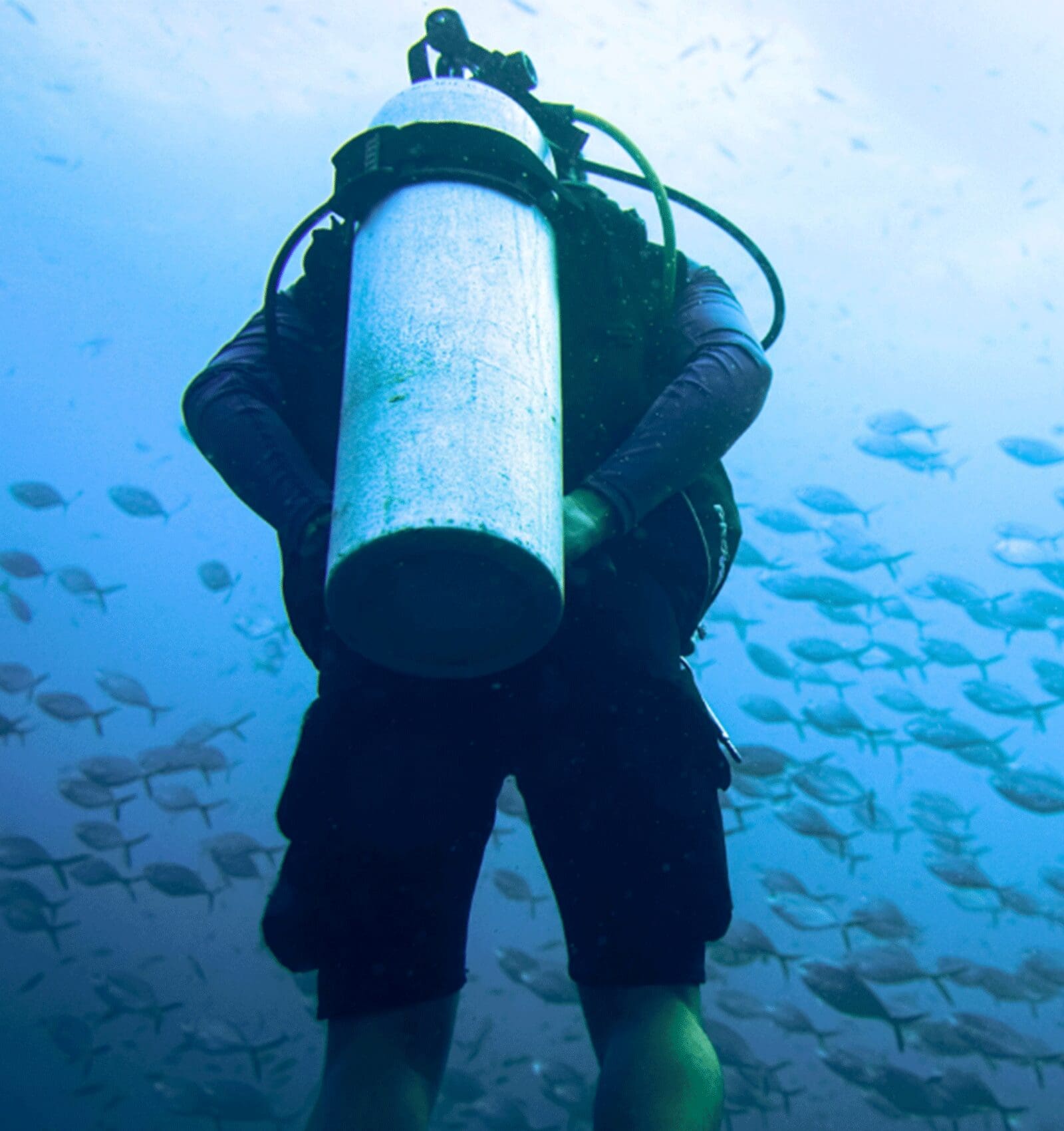
Wish to know more about diving ? Visit our web site and find out more information or contact us! Our team will be delighted to answer your questions. We hope to hear from you soon!
